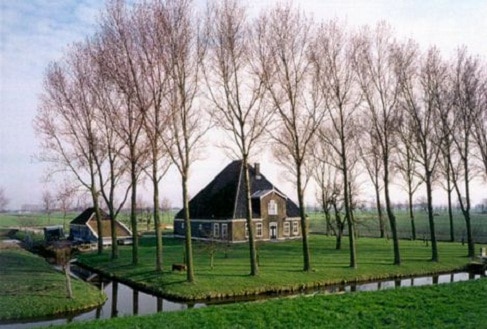The innovative and intellectually imaginative landscape of today Beemster Polder had a profound and lasting impact on recovery projects in Europe. The creation of the polder marks a great step forward in the interrelationship between man and water in a crucial period of social and economic expansion.
The polder is an extension of land that is reclaimed from the sea. And throughout the history of Holland, which is full of lagoons and deltas occupying most of the land, through the centuries this land was made habitable through land reclamation and protection against water.
Of the 3,4 million hectares that the Netherlands today constitutes one third is below sea level. If no dikes had been built and if there were no drainage of excess water, 65% of the country today would be under water.
The coastal area north of the North Holland Kop van and along the Wadden Sea was once an interconnected series of marshes that stretched south-west of Denmark. The need to 'create' new land arose from the damage caused by continuous flooding, with the added benefit of obtaining excellent farmland.
Five factors influenced the land reclamation process: the availability of capital for investment, the stability of political and economic relations, and the availability of technical means, an entrepreneurial spirit, and good prices for agricultural land.
The battle against water began in the northern part of North Holland, in the area above the open waters of the former IJ (Hollands Noorderkwartier), by keeping sea water out. Beginning in the 16th century efforts were directed towards lakes and drainage ponds located inland. Land reclamation was carried out by draining the Great Lakes, especially in the northern part of Holland.
This process was made possible by the drastic improvement in pumping and drainage technology from hydraulic wheel drive windmills.

